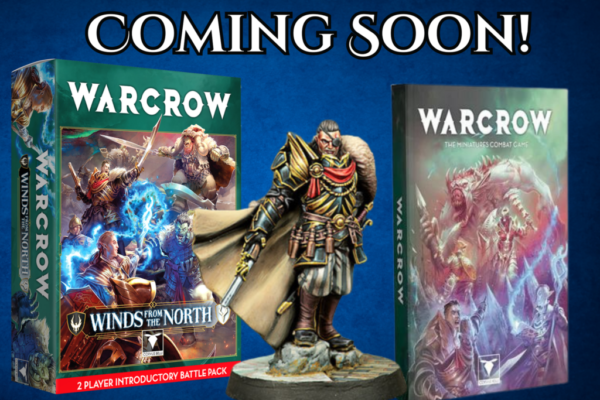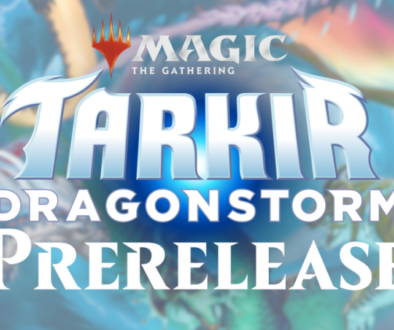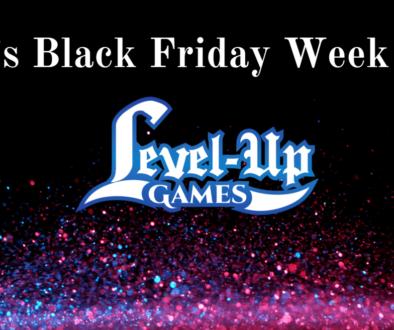Warcrow — Corvus Belli’s Midsized Fantasy Wargame with Precise Tactics
Corvus Belli is a renowned game publisher with many years in the miniature wargaming market through their sci-fi battler Infinity. However, they have set their sights on the fantasy wargame genre with the addition of Warcrow expected to release later this year.
What can players expect from the initial release wave and the greater world of Lindwurm?
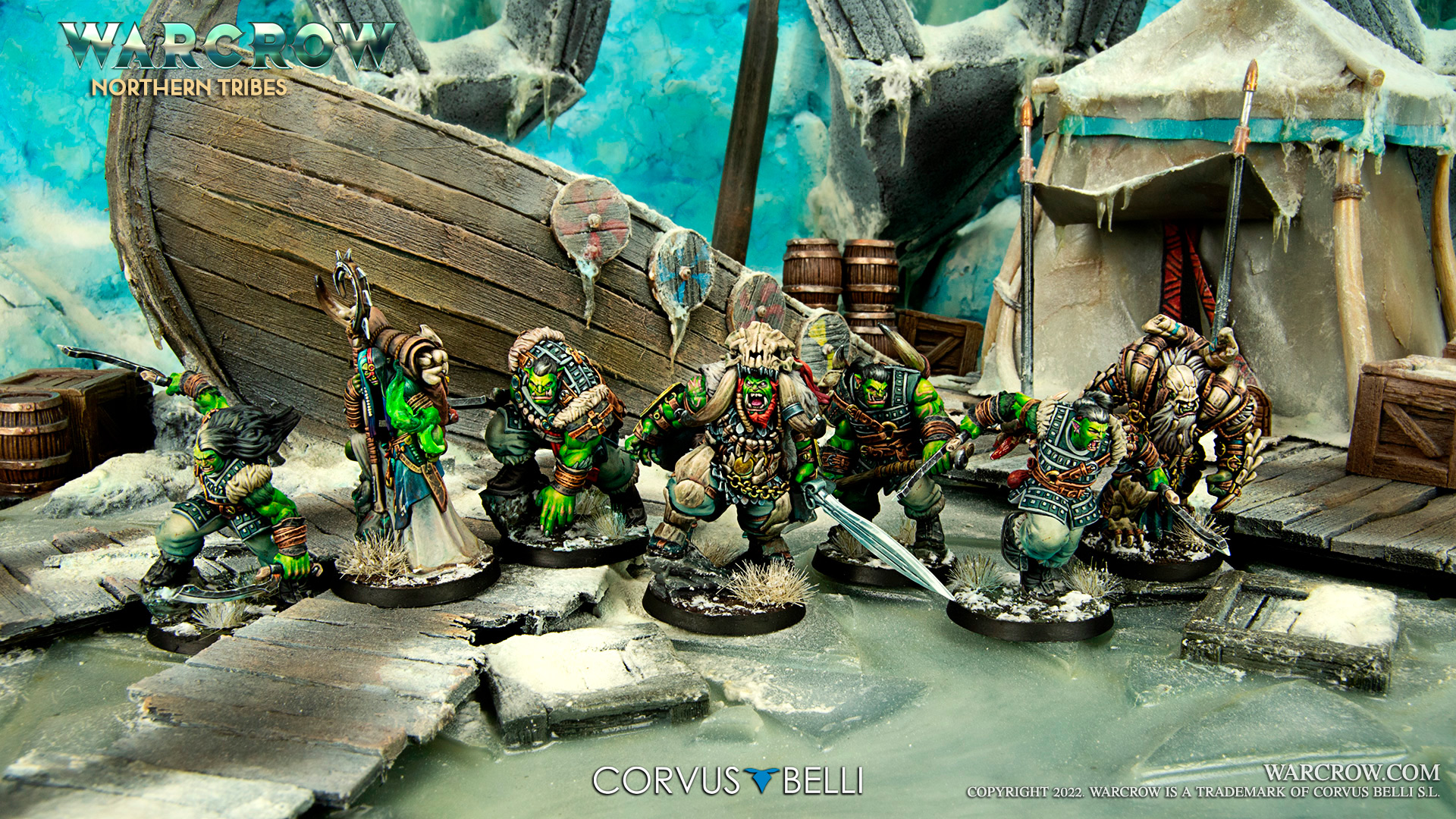
The game is launching with a two-player starter set designed to get players battling quickly with everything they need. Miniatures, terrain, playmat, dice, and more are included. Each faction represented in the box has 7 miniatures for a total of 14.
And boy…are these things amazingly detailed pieces of plastic!
Players will clash in a narrative scenario included in this set along with other standard scenarios.

The launch box contains a force from the Nothern Tribes, a bloodthirsty alliance of naturally fearsome Orcs and Varank, nature magic-empowered warriors whom of their mightiest can skinchange into terrible beasts!
Marching towards the battlefield to face them are members of the Hegemony of Embersig’s army, The Black Legion, the world’s most well-trained and powerful army consisting of members of allied Dwarves, elves, and humans under one banner.
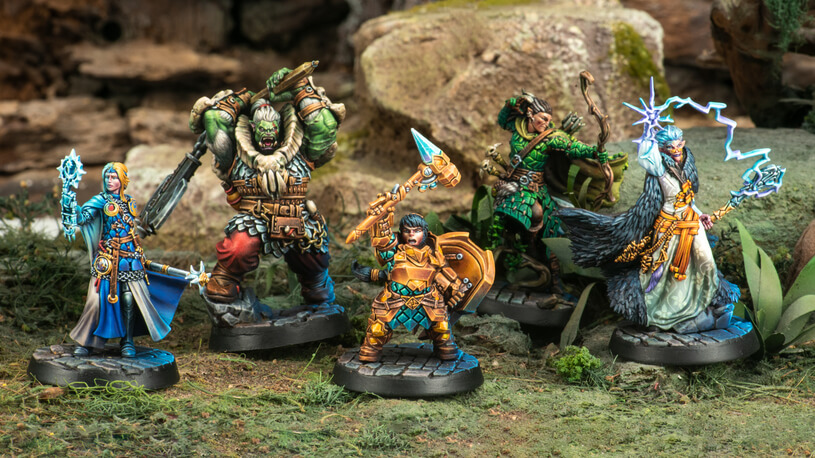
The other nations’ warriors will be arriving later. Check them out here.

Games are played on a 3’ x 3’ mat between small groups of models. The game’s feel will land somewhere between traditional and skirmish wargames, with full-scale battles averaging 10-15 models per player. Note that some units will comprise several individual models so players won’t be bogged down with 15 individual hero-type activations.
Corvus Belli has stated that Warcrow will be more scenario/objective play focused than Infinitiy. Scenarios will include things like typical “control areas of the map to score” and more dramatic ones like those that include a neutral monster or shifting fog of death repeatedly moving every 3 rounds.
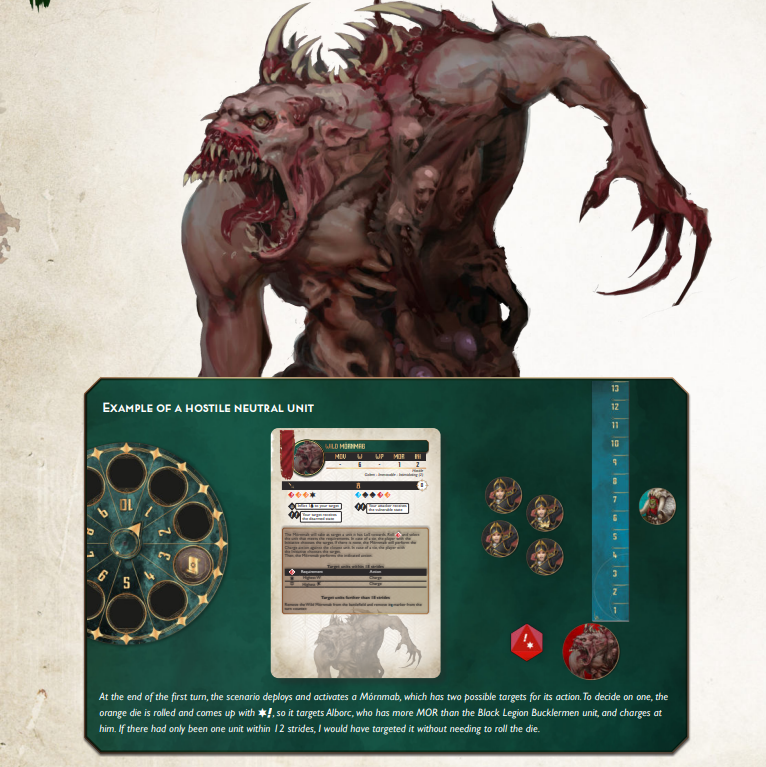
Players take turns in an alternating activation style, which makes for great moments of tension. The battlefield shifts constantly, and both players must act and react constantly in a round. That’s the very basic overview of Warcrow; now we get to more specifics.
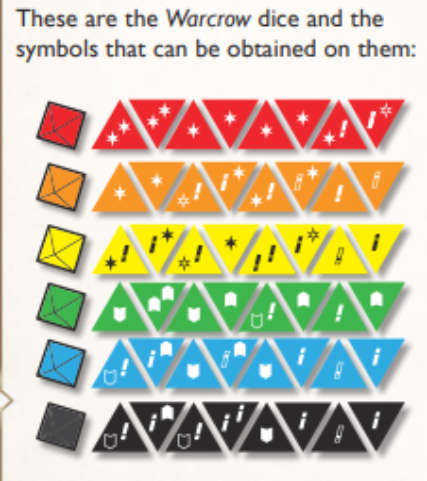
Firstly, the math rocks. Warcrow uses two separate dice types: offensive and defensive. They are all color-coded (Blue, green, and black for defense. Red, orange, and yellow for attack), 8-sided dice with various arrangements of:
1.) Success – On attack dice. Deals a hit to enemies.
2.) Block – On Defence dice. Negates a hit from attackers.
3.) Special “Switches” – On all dice. Allows special abilities to activate or other interactions.
4.) Hollow Success – On attack dice. Deals a hit to enemies under certain criteria.
5.) Hollow Block – On defense dice. Negates a hit from attackers under certain criteria.
6.) Hollow Special – On all dice. Allows special abilities to activate or other interactions under certain criteria.
This array of hollow faces, specials, and different types of attack and defense dice give the Warcrow designers a ton of balance levels to pull — ensuring future releases are given the best framework to be designed around.
How many of these dice you will roll when acting will be denoted on the game profiles of each unit.
Also marked here is a slew of other info, such as the movement, morale, willpower, and any bonuses the unit may get.
That was a lot of stuff I snuck in that one sentence, so let’s take it piece by piece.
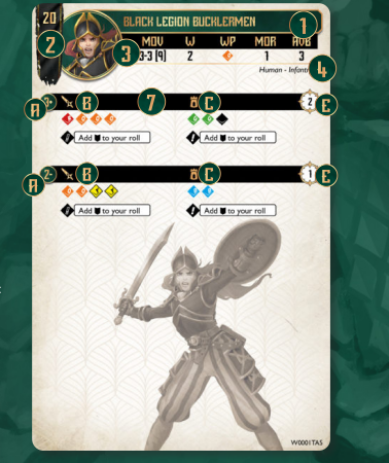
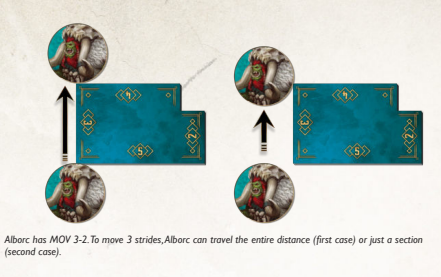
Movement in Warcrow is done using a movement tool measured in a unique distance called strides. Each model will have 3 MOV numbers in an X+X (X) format. The first two numbers denote the two normal move maximum distances in stride lengths a unit can make. The (X) refers to the unit’s charge length.
This means a unit with a 1+2 (5) MOV attribute may make a 1 and 2 stride length move (in any order) and may move 5 strides when charging. The charge action takes a unit’s entire activation.
See, not that bad! No need to stress…UNTIL NOW!
Stress tokens are a major piece of the strategy puzzle that is Warcrow. To summarize, stress tokens make your unit “break” and lose effectiveness once the number placed on a unit exceeds its morale value. Stress is gained several ways, including losing a combat (taking more wounds than the opponent), using an ability or attack that causes stress, and activating twice in a round.
A willpower roll can stop a unit from breaking. Stress levels are reduced through end-of-round system mechanics and other abilities.

One very juicy decision with stress comes into play after a unit has been defeated in combat (takes more wounds than they give). A victorious attacking player may “Push Back” the defeated unit equal to the first MOV value of the losing unit – and the victorious player may move their unit to close the gap (and possibly re-engage the opponent).
This movement negates nasty penalties for movement like opportunity attacks from the opponent but can be halted by adding a stress token to the pushed unit.
Plenty of special command abilities and spells also shake things up on the battlefield. Command abilities have a command token cost. Tokens are generated at the top of the game by your units (typically your characters).
Spellscasting is enticing but dangerous. As your mages cast spells, they must battle “The Tinge” an affliction caused by harnessing such power. Mages will have to make a roll, increased in difficulty if they have altered the spell.
Tinge token stack as you cast your spells, possibly harming the caster. Enemy players may also attempt to counter their spells at the cost of stress and the chance at tinge tokens themselves.
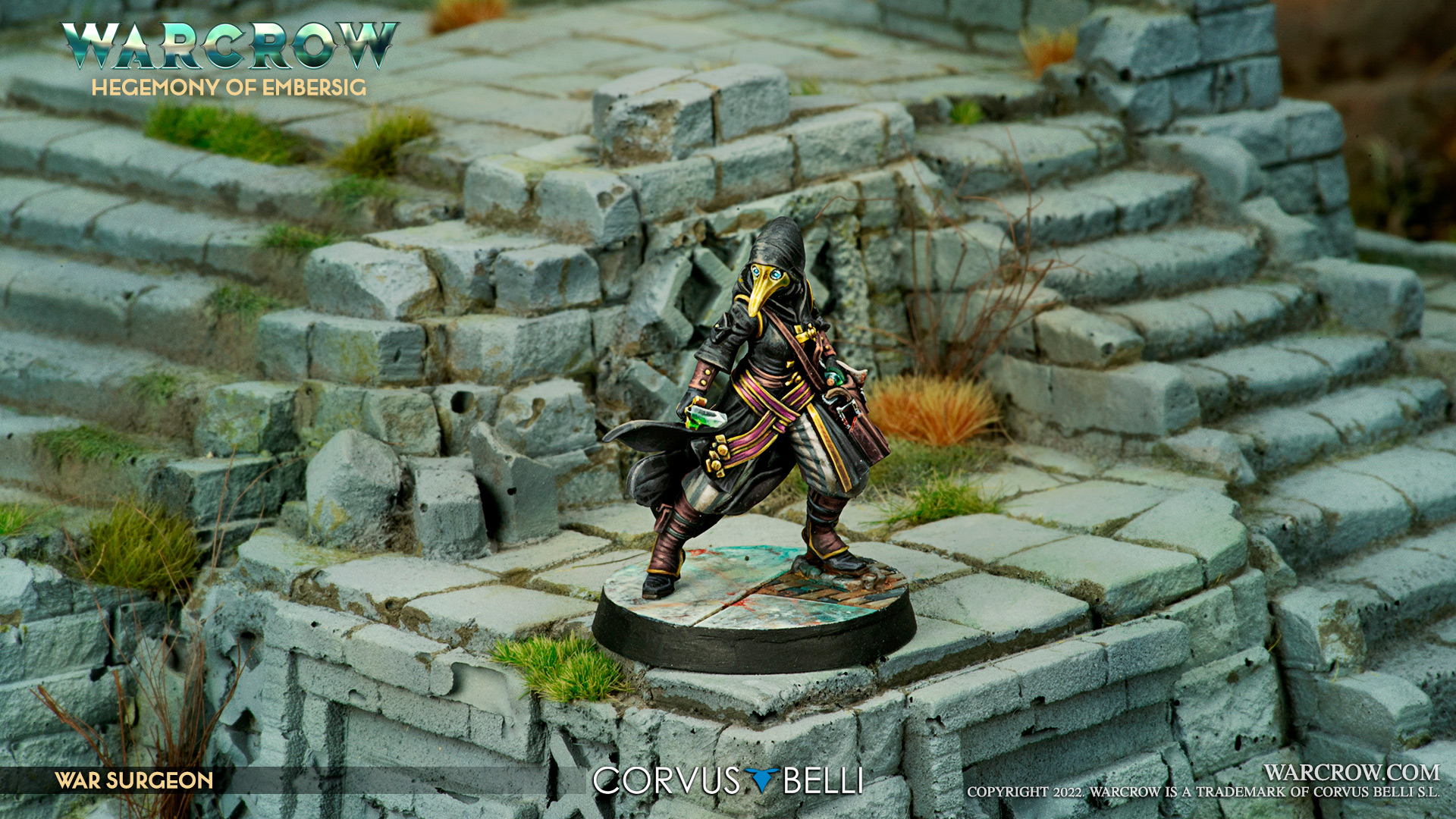
And that’s the basics of Warcrow!
Let us know if you are interested in any of the 3 items in the initial release wave with a call to any of our locations during store hours!
Also, check out the full rulebook here.
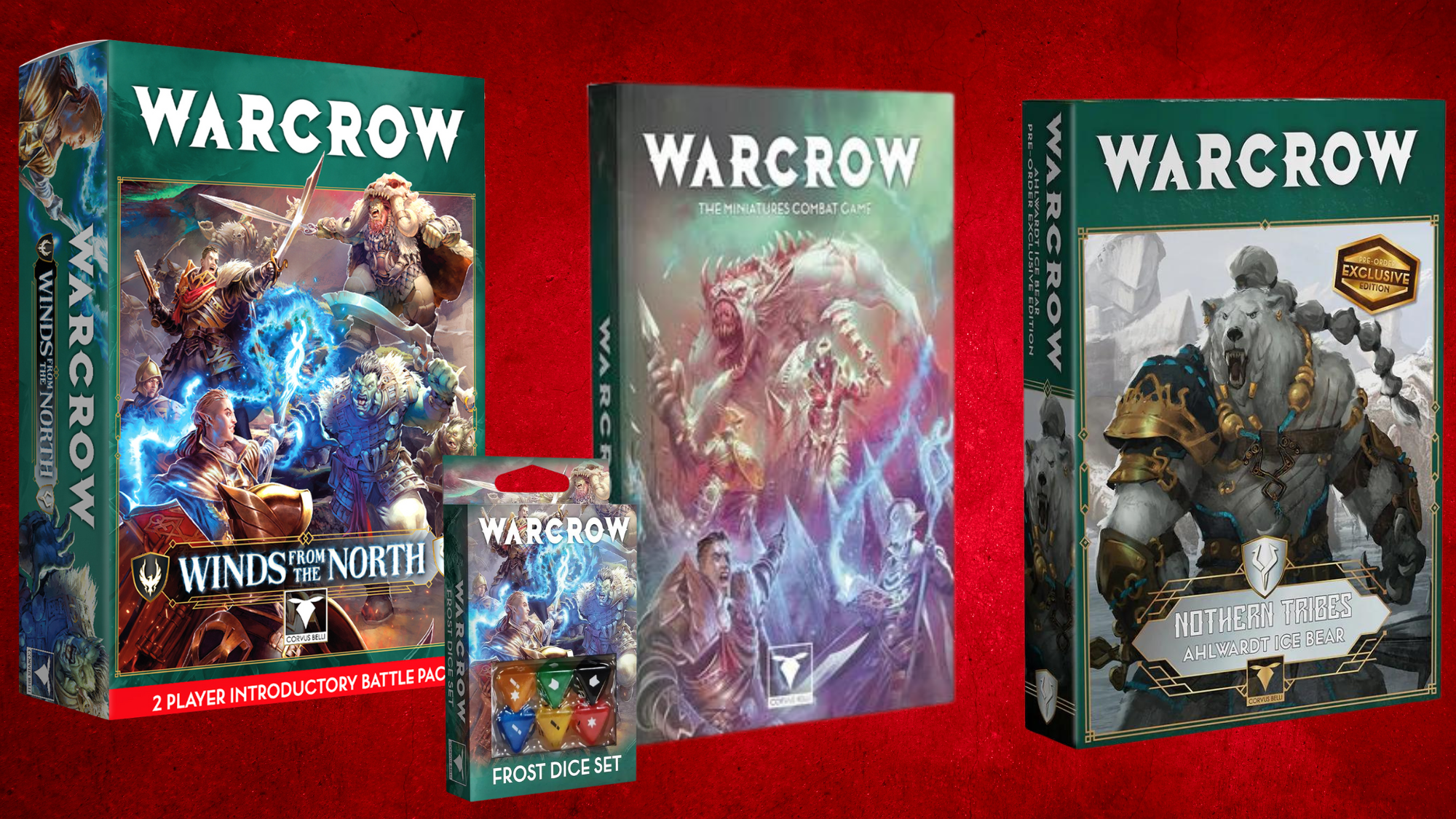
Core book: $78.99
Winds of the North 2-Player Starter Set: $154.99
Frost Dice Set: $15.49
Ahlwardt Ice Bear Pre-Order Exclusive Edition: $29.99

